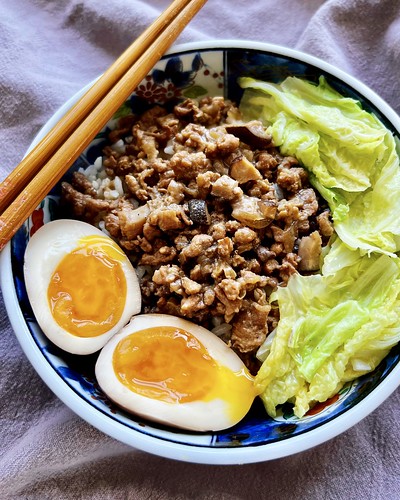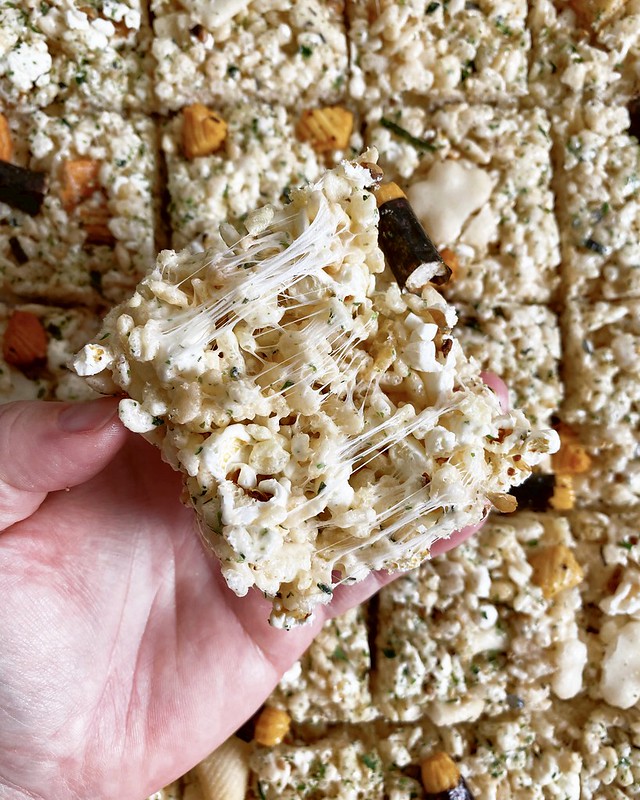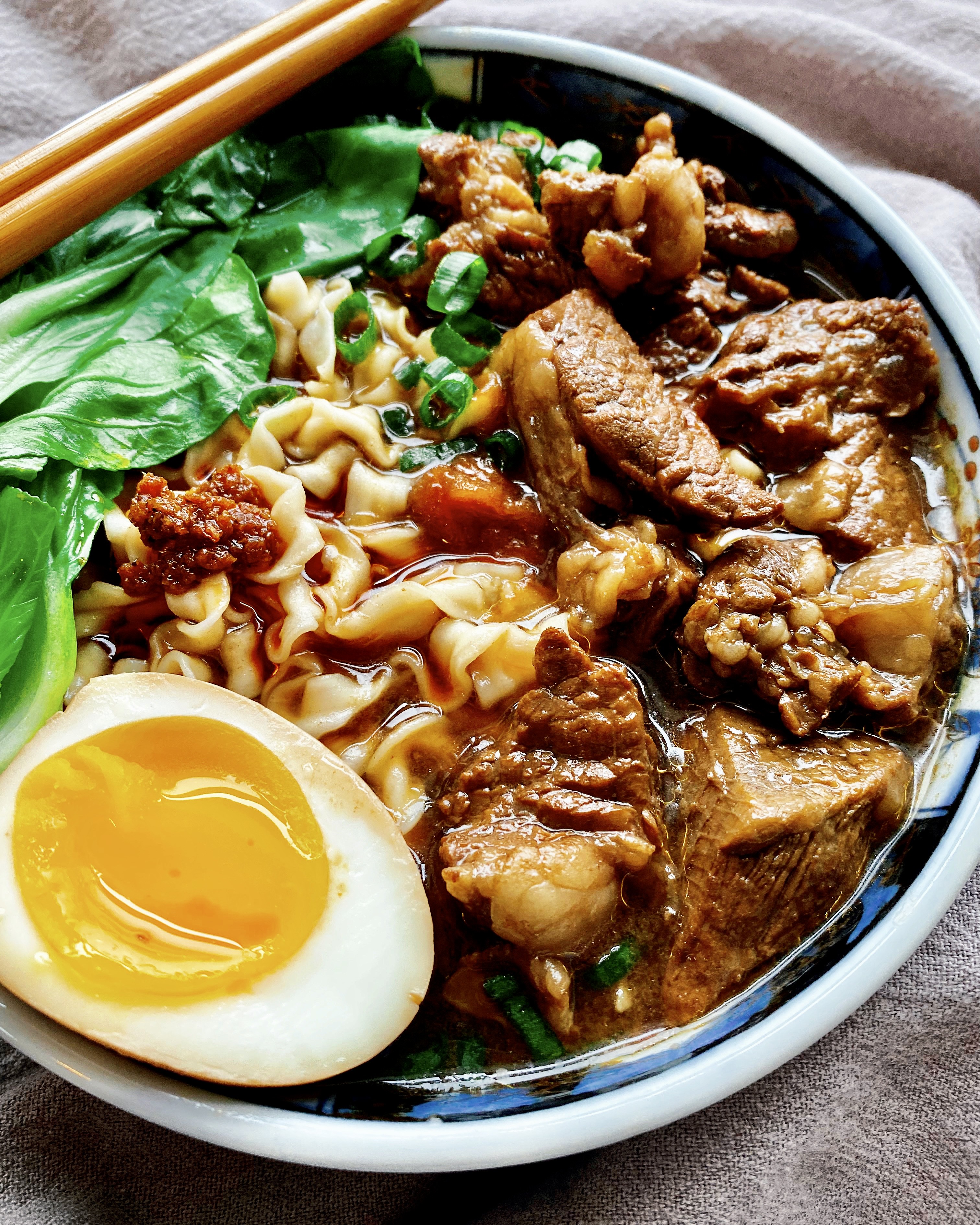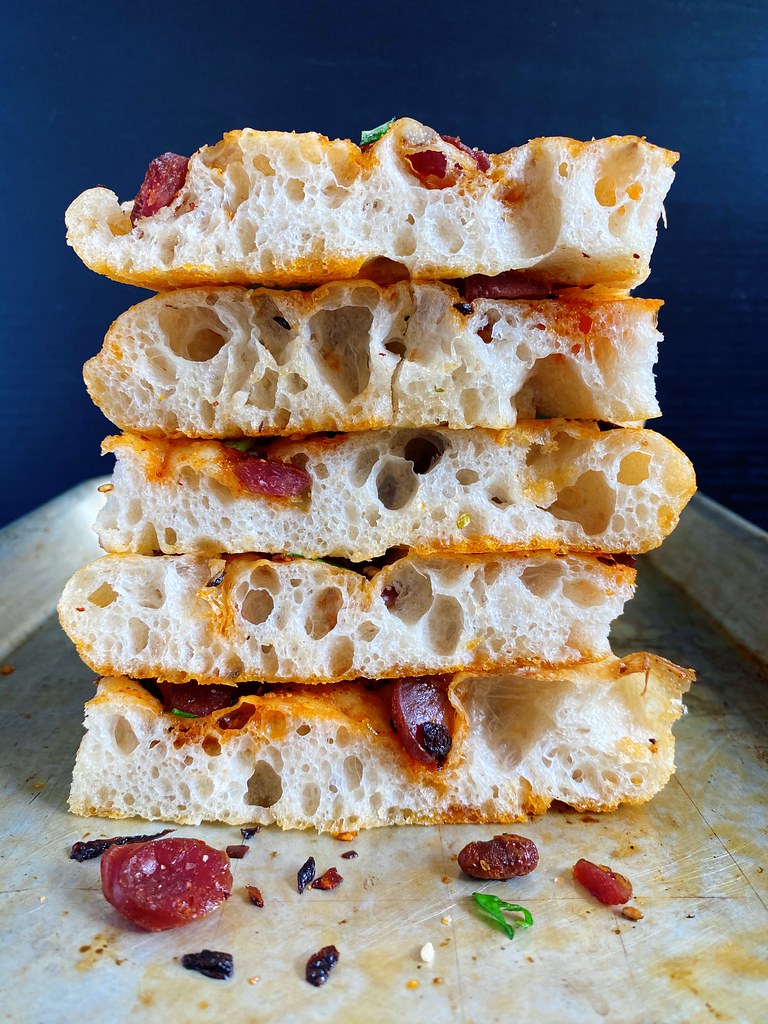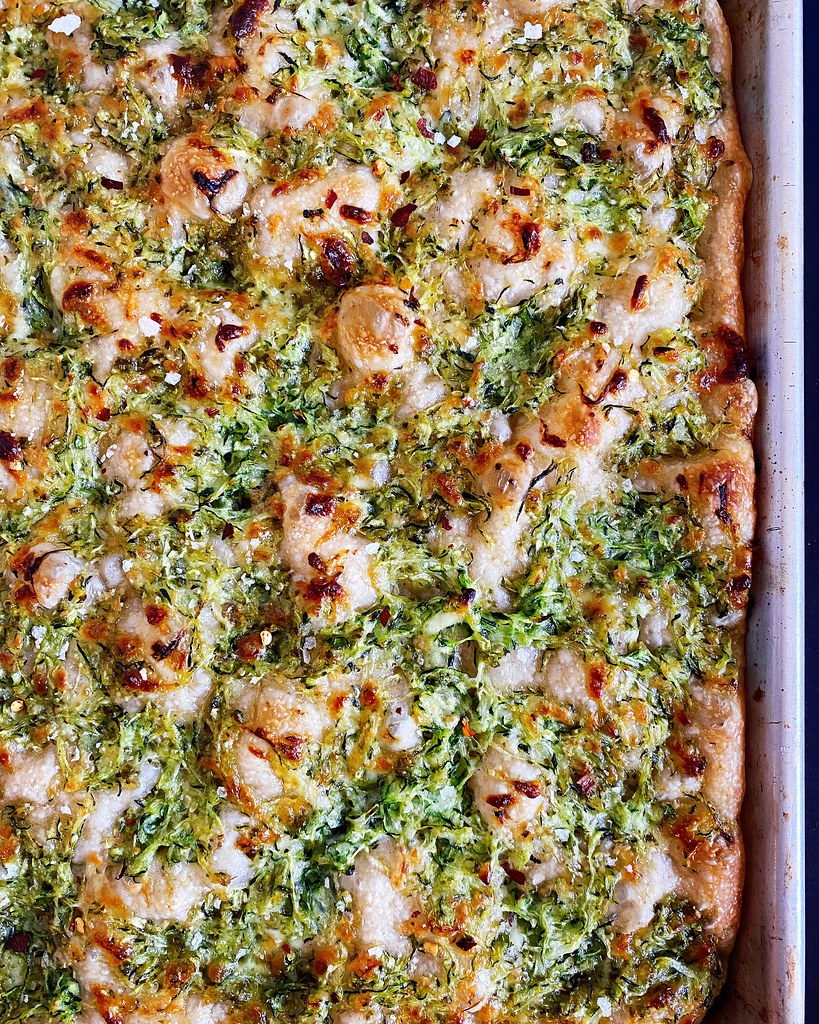When Rooted Fare asked me to develop a recipe that used their limited edition Lunar New Year Flavor Red Dragon Passion Fruit Spread, the first idea that popped into my head was to make nian gao (mochi cake) with it. Nian gao is commonly eaten during the Lunar New Year because it is a homonym for "year" and "high" in Chinese which is an auspicious phrase. There are many kinds of nian gao such as Shanghainese stir-fried nian gao (a savory dish) or steamed Chinese nian gao (a sweet dish), but my favorite kind is baked like butter mochi.
The last few years I've been baking my nian gao in a Baker's Edge brownie pan to maximize the crust to interior ratio, but someone once commented that they would make it in muffin tins for the same effect. Since I figured more people have muffin tins than a special pan, I decided to try making mine this way too.
For this recipe I adapted my trusty nian gao recipe by substituting 1/2 a cup of passion fruit pulp for an equal amount of milk. I love the added passion fruit flavor, but if you don't have passion fruit pulp, you can definitely make this with the full 3 cups of milk. And if you want an even more pronounced passion fruit flavor, you can use a whole cup of passion fruit pulp and just 2 cups of milk.
Passion Fruit Nian Gao with Red Dragon Passion Fruit Spread
makes ~24 servings
1/2 cup passion fruit pulp
2 1/2 cups whole milk
1/2 cup unsalted butter, melted
1 1/4 cups white sugar
3 large eggs, lightly beaten
1 teaspoon vanilla extract
1 lb. sweet glutinous rice flour (aka mochiko)
1 teaspoon baking powder
1/2 cup Rooted Fare's Red Dragon Passion Fruit Spread
Black sesame seeds (optional)
Preheat the oven to 350°F. Grease 2 muffin pans or a 9"x13" baking pan.
Combine the passion fruit pulp and the whole milk in a medium mixing bowl and microwave until warm but not hot, about 90 seconds (this is so the melted butter won't solidify when added and the eggs won't cook when added). Whisk in the melted butter and sugar. Add the beaten eggs and vanilla extract and whisk until combined.
In a large mixing bowl, whisk the sweet glutinous rice flour with the baking powder to combine. Add the liquids a cup at a time and stir; this will help prevent lumps in the final batter. At first the mixture will be *very* thick, but keep adding the liquids one cup at a time and stirring, and once the batter is smooth, you can add the rest of the liquids all at once. Whisk until completely smooth.
If using the muffin pans, add 1/4 cup of batter to each well. If using the baking pan just pour all the batter in at once. Dollop about a teaspoon of the Red Dragon Passion Fruit Spread into the center of each well or all over the baking pan.
Bake for 30 minutes if using the muffin pans, and about an hour if using the baking pan. The nian gao is done when the edges are golden brown and the center is set. If using, sprinkle on the black sesame seeds when the nian gao comes out of the oven. Let cool before serving. Store any leftovers in an airtight container at room temperature for up to 3 days. If it is too firm after a couple of days you can gently warm it up in the microwave for about 15 seconds to get the chewy texture back.
If you run out of the Red Dragon Passion Fruit Spread (it is limited edition, after all), the original nian gao recipe is excellent with Rooted Fare's Crunchy Black Sesame Butter dolloped on it instead of red bean paste!
Previously: Soy-Marinated Jammy Eggs








